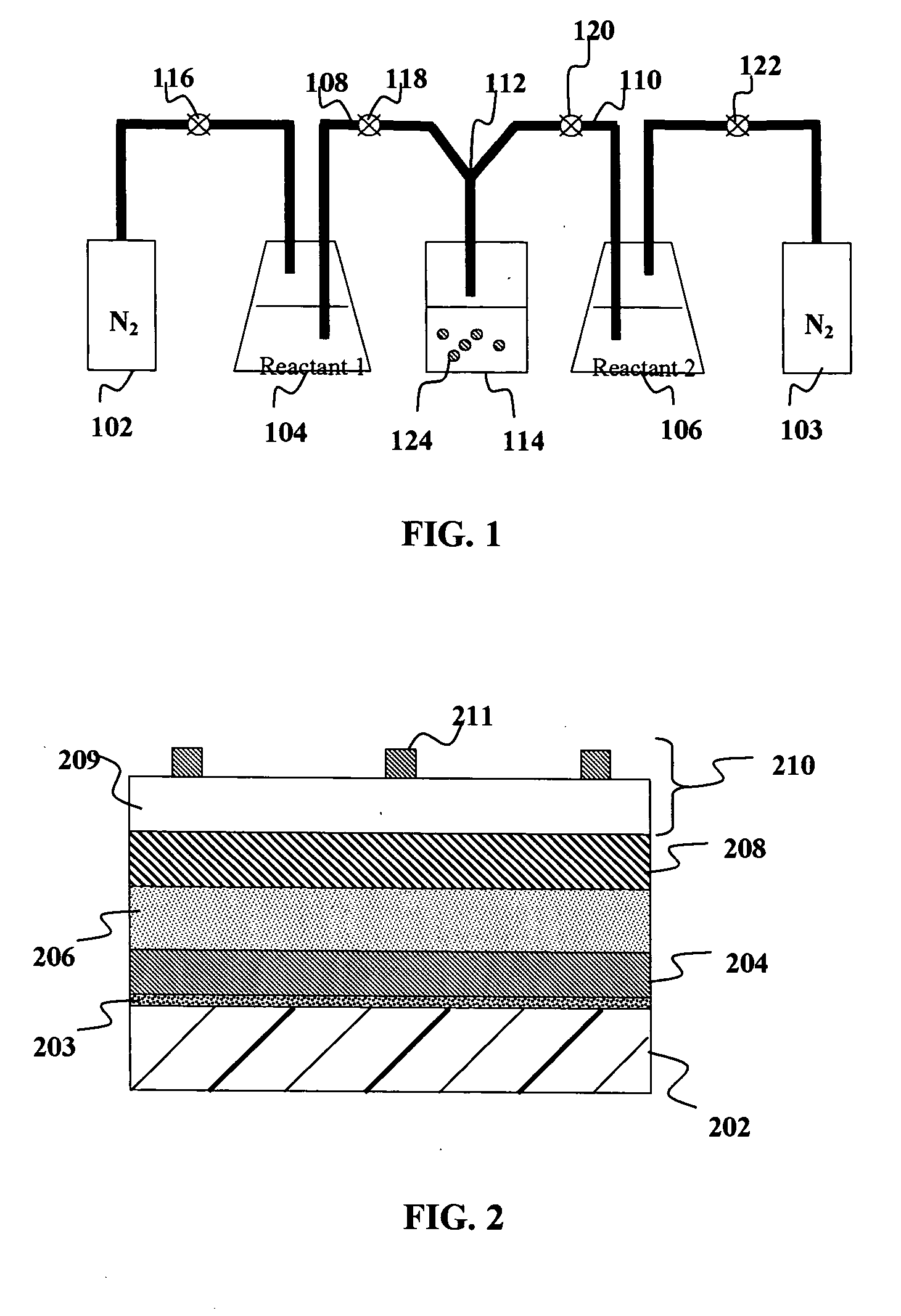Solution-based fabrication of photovoltaic cell
a technology of photovoltaic cells and solutions, applied in the field of photovoltaic cells, can solve the problems of high temperature reduction and selenization steps used in each of the solar cell fabrication processes, which are neither cost effective nor easily scaled to high-volume production, and the h/sub>2/sub>se gas used is both highly toxic and flammable, and the overall cost is serious
- Summary
- Abstract
- Description
- Claims
- Application Information
AI Technical Summary
Benefits of technology
Problems solved by technology
Method used
Image
Examples
Embodiment Construction
[0009] Although the following detailed description contains many specific details for the purposes of illustration, anyone of ordinary skill in the art will appreciate that many variations and alterations to the following details are within the scope of the invention. Accordingly, the exemplary embodiments of the invention described below are set forth without any loss of generality to, and without imposing limitations upon, the claimed invention.
[0010] As used herein, the following terms have the following meanings:
“Elemental” refers to a material in substantially pure form as opposed to combined with other elements as in an alloy or in a chemical compound.
“Non-oxide” refers to a chemical moiety substantially devoid of oxygen.
[0011] Embodiments of the present invention provide several key features of a liquid ink that impact cell structure and function. The liquid ink includes particles containing elements of groups IB, IIIA and (optionally) VIA, e.g., copper and indium (with o...
PUM
| Property | Measurement | Unit |
|---|---|---|
| particle size | aaaaa | aaaaa |
| particle size | aaaaa | aaaaa |
| diameter | aaaaa | aaaaa |
Abstract
Description
Claims
Application Information
 Login to View More
Login to View More - R&D
- Intellectual Property
- Life Sciences
- Materials
- Tech Scout
- Unparalleled Data Quality
- Higher Quality Content
- 60% Fewer Hallucinations
Browse by: Latest US Patents, China's latest patents, Technical Efficacy Thesaurus, Application Domain, Technology Topic, Popular Technical Reports.
© 2025 PatSnap. All rights reserved.Legal|Privacy policy|Modern Slavery Act Transparency Statement|Sitemap|About US| Contact US: help@patsnap.com


